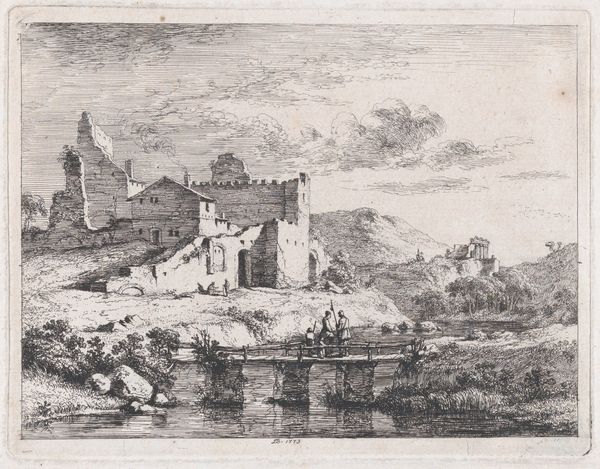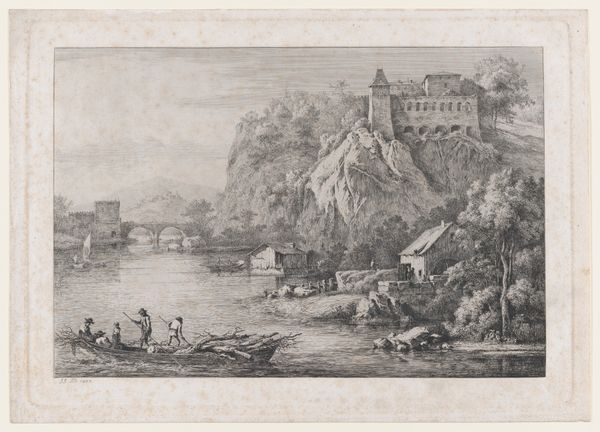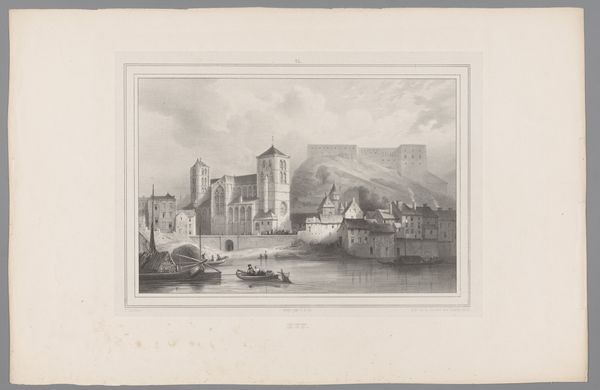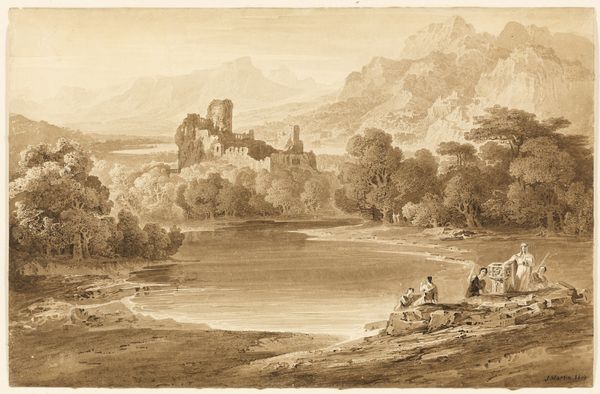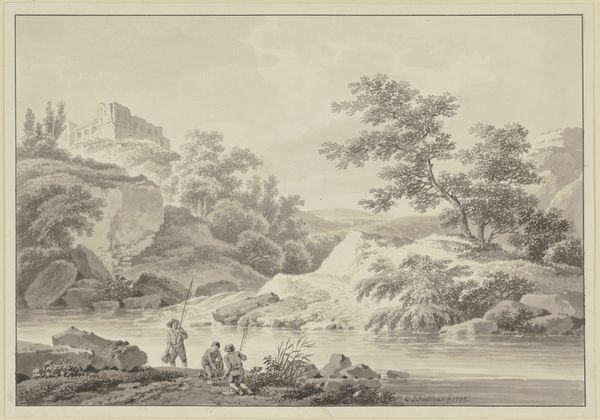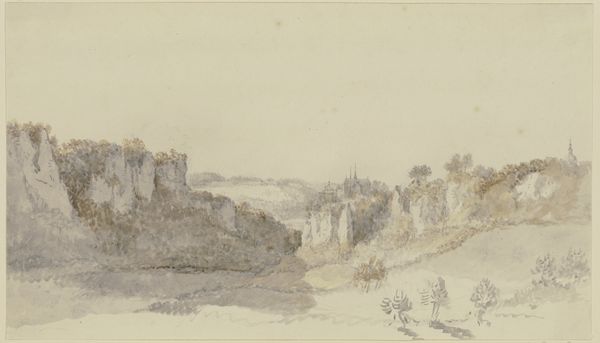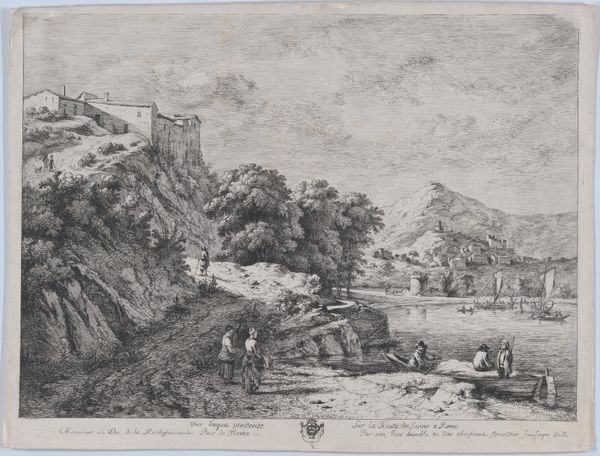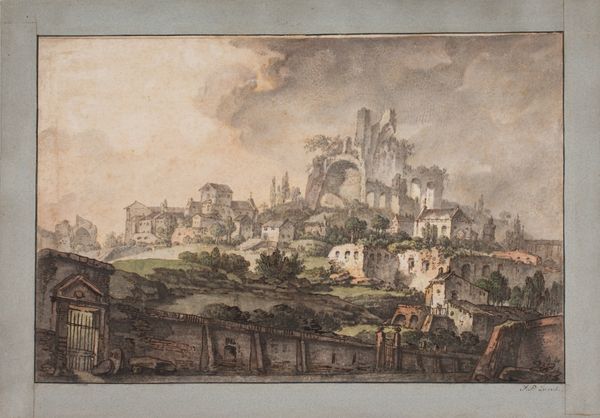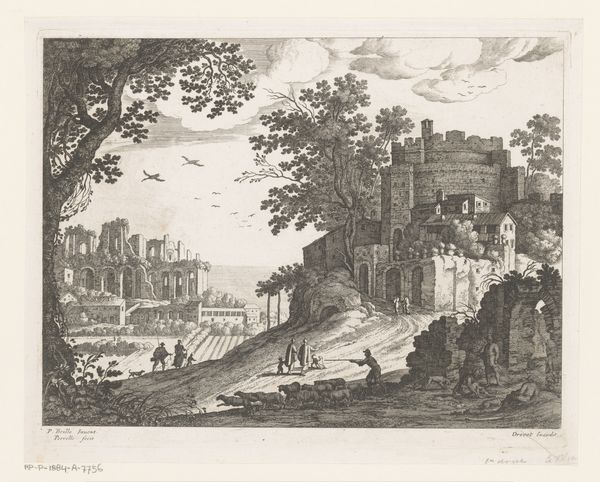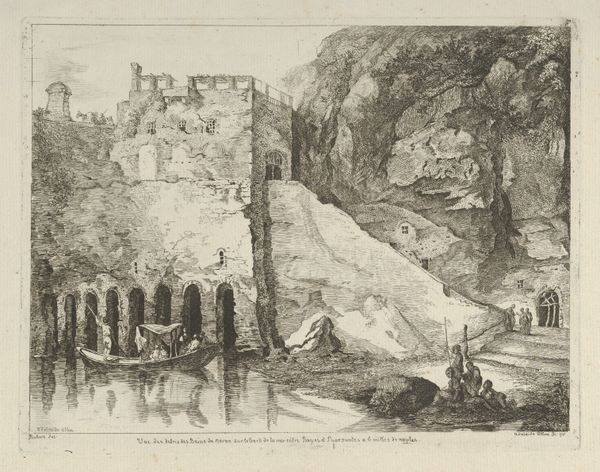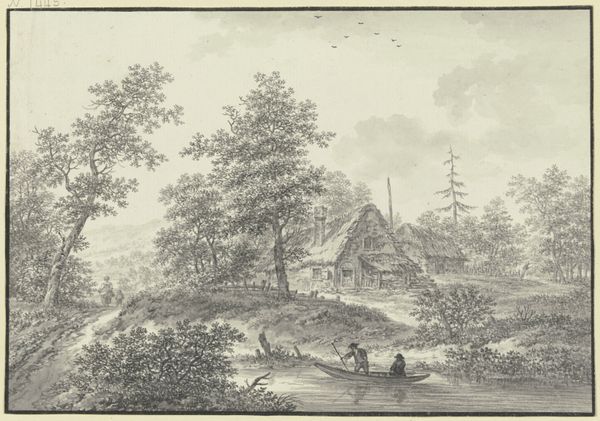
drawing, ink, pencil, architecture
#
drawing
#
16_19th-century
#
pencil sketch
#
landscape
#
ink
#
romanticism
#
pencil
#
19th century
#
architecture
Copyright: Public Domain
Curator: Here we have Rudolf Kuntz's "Burg auf einem Hügel an einem Fluss", or "Castle on a Hill by a River," created in 1842. It's rendered in pencil and ink, a technique common for the rapid creation of landscape studies. Editor: My first impression is quiet serenity. There’s something incredibly peaceful about the scene. A sense of nostalgia, maybe? It feels like stepping into a forgotten dream, almost sepia-toned even though it’s just pencil and ink. Curator: The sepia tone is understandable! The ink, often iron gall ink, naturally ages that way. The paper itself plays a role. It's not just a passive ground; its weave and absorbency affect how the ink bleeds and settles, a collaboration between maker and material. And we must consider Kuntz's location and patronage; were these quickly sold keepsakes, or commissioned studies for a more important painting? Editor: Good point about the collaborative process, Material informs the dream. The way the castle dominates the composition, though – perched high, overlooking the river traffic – it makes me wonder about power. Both its imposition and its inevitable decay as a function of material realities. It is like seeing a grand potential rendered so small on a sheet of paper. Almost vulnerable. Curator: Precisely. Romanticism was fascinated by ruins and the encroachment of nature upon the built environment. Note the detail in the vegetation versus the architecture: perhaps nature, always grinding materials down and returning to form, wins in the end. Then think about how Kuntz secured materials such as high-quality pencils during a period of rising industrialisation; how available, how portable? Editor: Yes, those contrasts of man and nature are compelling. The almost casual placement of figures along the shore and a lone fisherman only underlines how indifferent the world feels to any human presence. The overall impression is not just melancholic, it's about something passing—the ephemerality of ambition. Curator: Ambition embodied in both the imposing architecture and the act of producing art to outlive the maker. It reminds me that these scenes are produced by the economic landscape of 19th-century Frankfurt as much as the actual geographical ones, that both fed a demand and provided the infrastructure to bring them to us today in a condition fit for continued study. Editor: I am taken again by its seeming simplicity, while understanding the layers of thought and manufacture woven into the fibres of that very paper. An artefact in conversation with both its physical landscape and historical landscape—an artwork that still whispers questions more than delivers answers.
Comments
No comments
Be the first to comment and join the conversation on the ultimate creative platform.
